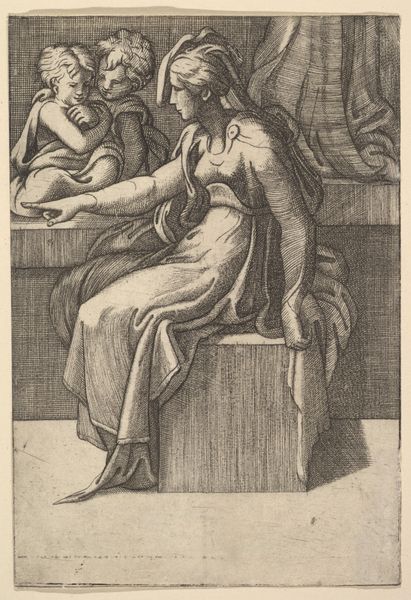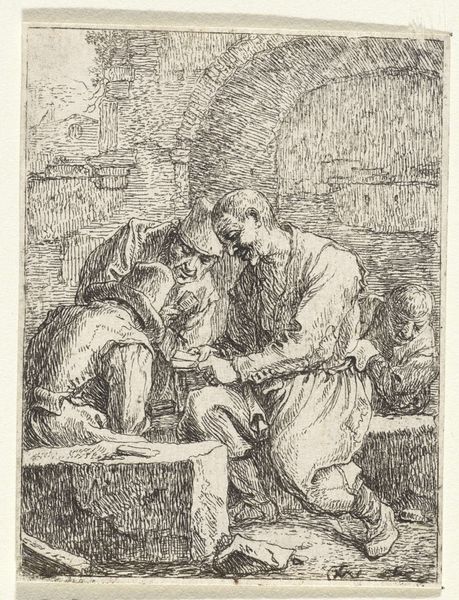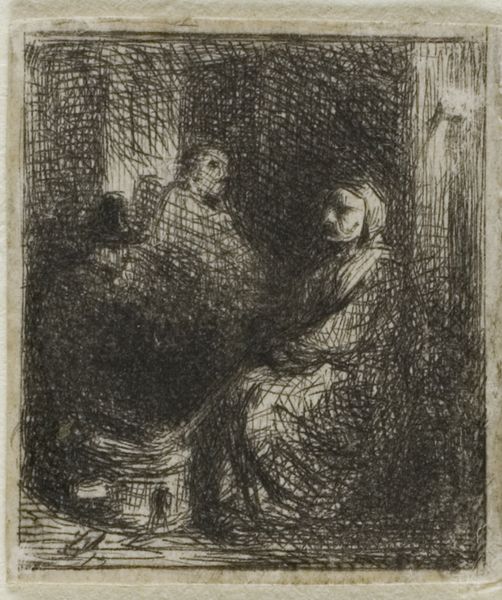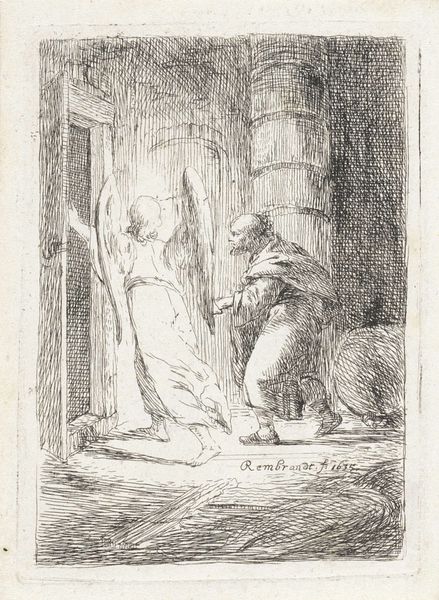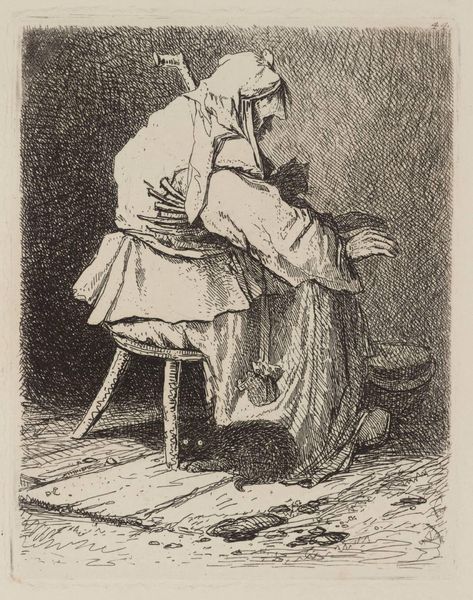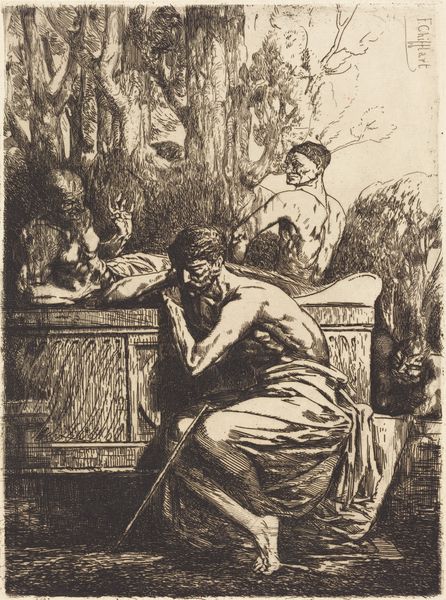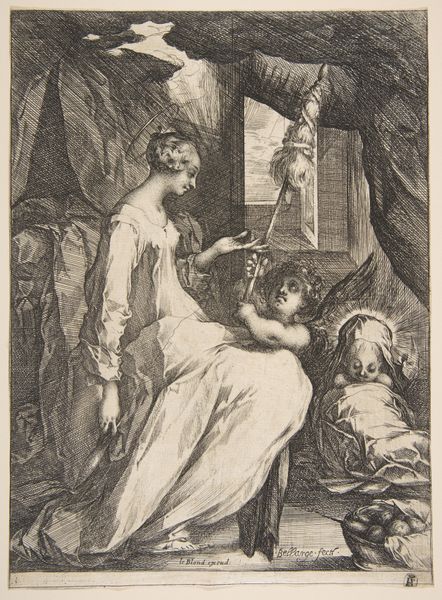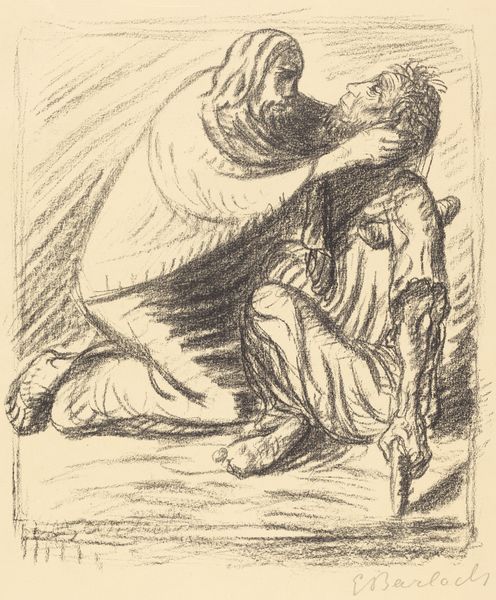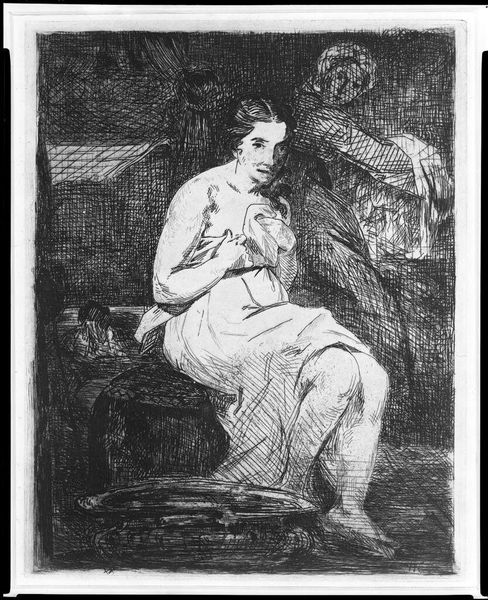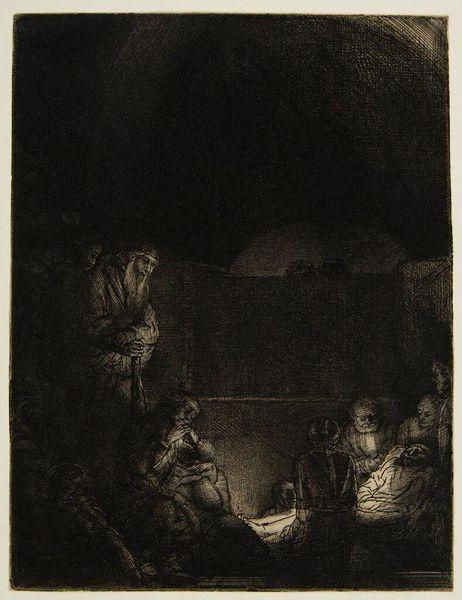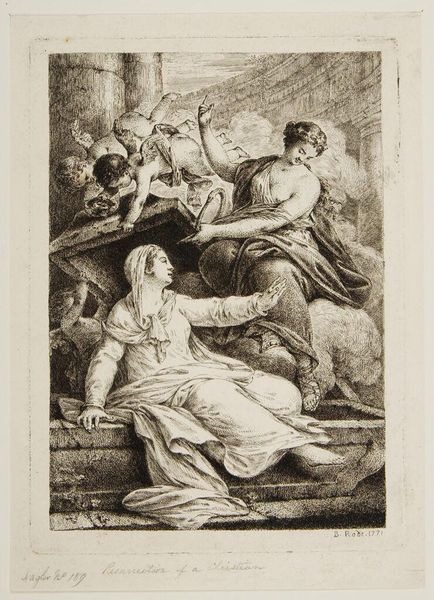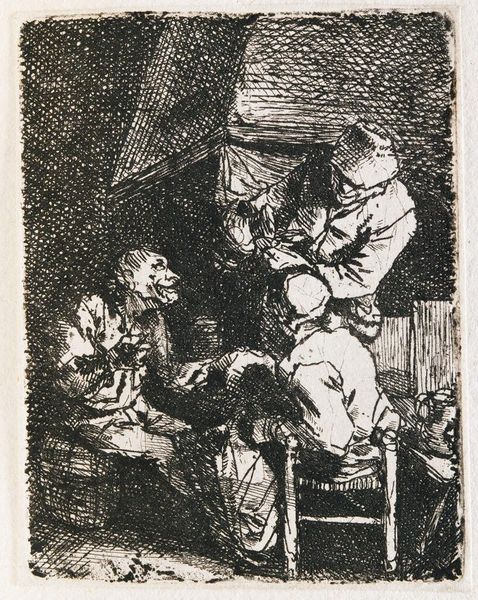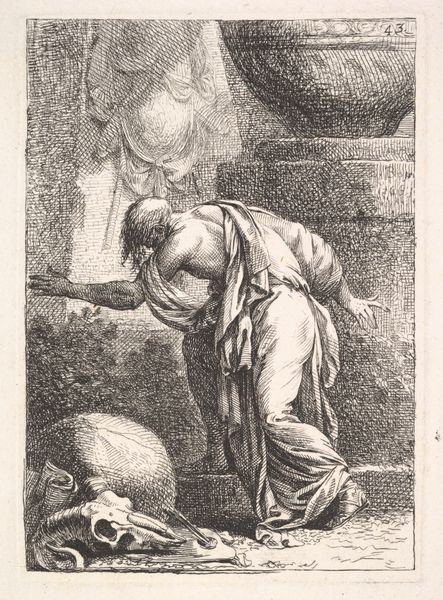
Dimensions: image: 144 x 106 mm
Copyright: CC-BY-NC-ND 4.0 DEED, Photo: Tate
Editor: This is Alexander Runciman's "Agrippina with the Ashes of Germanicus." The cross-hatching creates such a somber mood. What strikes you about the composition? Curator: The stark contrast between light and shadow emphasizes the emotional weight of the scene. Observe how Agrippina's draped figure dominates the foreground, a study in classical form. How does the inscription "Germanicus" affect your reading of the work? Editor: It personalizes the grief, making it less abstract. I hadn't considered how her pose echoes sculptures of Roman mourners. Curator: Precisely. Runciman uses line and form to convey a profound sense of loss, rooted in classical ideals. The starkness amplifies the emotional core. Editor: It's incredible how much emotion is conveyed through such simple lines and forms. Thank you.
Comments
tate 7 months ago
⋮
http://www.tate.org.uk/art/artworks/runciman-agrippina-with-the-ashes-of-germanicus-t03606
Join the conversation
Join millions of artists and users on Artera today and experience the ultimate creative platform.
tate 7 months ago
⋮
A large picture of this subject by another Scottish artist, Gavin Hamilton, is also in the Tate's collections; it was shown at the Royal Academy in 1772, the probable year of this etching. Runciman himself produced an oil painting on the theme for the R.A. in 1780. The subject was therefore a standard one for the neo-classical period, and Runciman's treatment of it here sums up the Grecian inspiration of the time.Germanicus Julius Caesar, soldier and poet, had gained his name in campaigns fought against the Germans; he was assassinated at Antioch, Asia Minor, in 19 AD. His widow Agrippina brought his ashes home to Italy, landing in the South at Brundisium (Brindisi). Gallery label, August 2004
